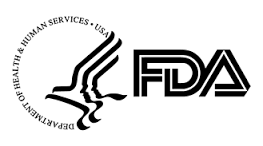Some FDA-recalled medical devices remain in use while manufacturers implement corrections

Editor's Note A 2016 recall issued for the Abbott MitraClip cardiac device highlighted potential safety concerns, but instead of removing the product from the market, Abbott and the Food and Drug Administration (FDA) allowed continued use with revised instructions and additional training for doctors. This approach reflects a broader trend…
International study highlights OR waste management strategies, barriers

Editor's Note Effective waste segregation and adopting a circular economy approach can significantly reduce environmental impact of incinerating hospital waste incorrectly classified as hazardous, according to a narrative review published August 19 in the Medical Journal of Australia. However, surgeons' concerns about patient safety and insufficient systemic policies can hinder…
‘Surgical pause’ saving lives, expanding beyond VA hospitals

Editor's Note The “surgical pause”—a means of validating whether surgery is truly safe for patients deemed to be “frail” before starting a procedure—significantly reduces mortality rates and is changing practices at more than 50 Veterans Administration (VA) hospitals, the Pittsburgh Post-Gazette reported August 18. Developed by VA surgeons Daniel Hall…
FDA announces Class 1 recall for chest compression devices

Editor's Note The US Food and Drug Administration (FDA) has designated Defibtech, LLC’s recall of RMU-2000 ARM XR Chest Compression Devices as Class 1, the most severe category indicating serious risk of injury or death. A motor issue could stop compressions in adults whose hearts suddenly stop, according to the…
Studies highlight success strategies for combatting handoff communication failure, care inequity

Editor's Note Recent research sheds new light on addressing two of the most pressing problems for surgical care: handoff communication failures and care bias and inequities leading to adverse—and preventable—events. These problems are the subjects of two separate success stories in the August issue of The Joint Commission Journal…
Immunotherapy’s FDA approval expected to improve lung cancer treatment

Editor's Note The US Food & Drug Administration (FDA) has approved immunotherapy durvalumab for perioperative treatment of resectable non-small cell lung cancer (NSCLC), according to an August 15 announcement. The approval is for durvalumab (Imfinzi, AstraZeneca) in combination with platinum-based chemotherapy as a neoadjuvant treatment, followed by durvalumab alone as…
Study links patient mortality to low nurse staffing, overreliance on temporary hospital staff

Editor's Note A recent study conducted across 185 hospital wards in England highlights the significant impact of nurse staffing levels and staff composition on patient mortality. Published August 19 in JAMA, the study analyzed data from over 626,000 hospital admissions between 2015 and 2020. It found that low staffing levels…
Study reveals low rate of unplanned hospital admissions after ambulatory surgery

Editor's Note A recent study, published by Perioperative Medicine on August 13 and conducted at a large US academic tertiary care ambulatory surgery center (ASC), found the incidence of unplanned hospital admissions within 24 hours after a procedure performed at an ASC is “exceptionally” low. The research, which analyzed data…
Countdown to OR Manager Conference: Creative staffing models to increase surgical case volume within a fixed footprint

Editor's Note MD Anderson Cancer Center shared insights on overcoming OR capacity challenges during a session at last year’s OR Manager Conference that highlighted creative solutions to staffing shortages and capacity constraints. With the ongoing pressures exacerbated by COVID-19, which is hitting a peak this summer, MD Anderson has implemented…
CDC: Pregnancies without prenatal care rise amid declining US birth rates

Editor's Note The percentage of new mothers without any prenatal care is rising amid an overall decline in US birth rates, according to new data from the Centers for Disease Control and Prevention (CDC). NBC News reported on the data August 21. According to the article, CDC’s National Center for…

 Free Daily News
Free Daily News